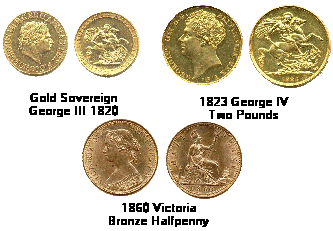An issue related to shopping was money. Coins were the most popular way for paying for goods and services. While checks and banknotes were available, merchants could not trust that they were not forged or counterfeit. Government banknotes did not become available until the 20th century and were not practical for every day purchases. Most purchases were paid for in coins.
Those who were able to, the middle-class and the elite were able to establish weekly, monthly or quarterly accounts for their purchases. Some of the merchants ended up losing money on the longer-held accounts. Occasionally local shopkeepers showed compassion to their working class customers by allowing them to keep an account on a weekly and sometimes a monthly basis.
The shopkeepers were continually looking for ways to collect payment from their customers and return their change as their was a significant degree of risk of robbery. Oftentimes, the shopkeeper would collect the money and give it to one of his staff who in turn would go to the back of the store, get the change and bring it back up to the shopkeeper.
Cash registers were not commonplace until the end of the century. Many store owners kept a small wooden tray or bowl to hold the coins collected. A metal screen on the counter's edge would prevent customers from reaching over to help themselves to the cash tray.
A shopper would carry their money in a purse or pocketbook which was more like a pouch which could be worn below one's skirt or inside breeches. Some of these were beautifully designed and were created in silk or cotton and bore an embroidered design. Purses later developed to include a frame and clasp which replaced drawstrings. Another type of purse used was called a "miser's purse", a short knitted or crocheted tube with metal rings to keep the contents inside. It was often small and light enough to be worn around the neck.
 As previously mentioned, coins were the most common means of payment for one's purchases. Coins were developed around the penny, but also included several which were fractions of a penny. A Victorian purse might hold the following coins:
As previously mentioned, coins were the most common means of payment for one's purchases. Coins were developed around the penny, but also included several which were fractions of a penny. A Victorian purse might hold the following coins:
-
Coin Name Description Written As
FarthingCopper and bronze, 1/4 of a penny 1/4d Halfpenny (ha'penny) Copper and bronze 1/2d Penny Copper and bronze 1d Two pence or tuppence Silver 2d Threepence or thruppence Silver 3d Groat Silver, worth 4 pennies 4d Sixpence Silver 6d Shilling or bob Silver, worth 12 pennies 1s Florin Silver, equal to 2 shillings 2s Double Florin Silver, equal to 4 shillings 4s Half Crown Silver, equal to 2 shillings and sixpence 2s 6p Crown Silver, equal to 5 shillings 5s Half Sovereign Gold, equal to 10 shillings or 1/2 pound 10s Sovereign Gold, equal to 20 shillings or 1 pound £1
British currency was minted under strict requirements and standardized weights and sizes. It was therefore possible to "count" the amount of cash in one's pouch by its weight. It is interesting to note that gold coins were in heavy circulation in the period.
Back to Intro/Index or Site Map
| | Family Gallery | Servants Parlour | Tour Home | Typical Day | Etiquette | Shopping Trip | |
| | Victorian Christmas | Victorian England Fun and Games | Ashton Library | Victorian Wedding | |
| | Victorian England Overview | Guest Registry | Honorary Victorian | Tours | |
| | Awards Received | Bibliography | |
| | 1876 Victorian England Home | |
Credits below copyright information |
| Contact
webmaster |
| Copyright
1999-2017 All Rights Reserved - B. Malheiro May not be reproduced in any way without express written permission of webmaster. |
Credits:
Background and buttons are the creation of webmaster, B. Malheiro. These images have been watermarked and are not for use on another site. Site authored by webmaster.